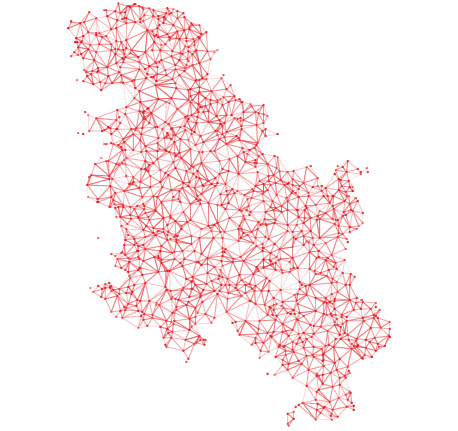
National holidays
| January 1 – 2 | New Year’s Day |
| January 7 | Christmas (Orthodox) |
| February 15 | Statehood Day |
| --- | Easter (Orthodox, from Good Friday to Easter Monday) |
| May 1 | Labour Day |
| May 9 | Victory Day (commemorative day) |
For centuries Serbia stood between the East and the West, geographically, politically and culturally. First between Byzantine and Roman empires, then between the Ottoman Empire and the Christian West; the position led to migrations and mixing of cultures and traditions resulting in multiethnic and multireligious society.
This fascinating and unusual country offers friendly and hospitable people, gorgeous countryside, delicious food and endless entertainment.
Medieval heritage instated on UNESCO list include Studenica monastery, Stari Ras and Sopocani and Gamzigrad – Romuliana. Serbia has four national parks: Djerdap, Fruska Gora, Kopaonik, and Tara. Out of the twenty or so nature parks, the one that deserve to be singled out are Sargan – Mokra Gora, Stara Planina and Zobnatica.
We all need to take a walk in the countryside, breathe in some fresh air and relax in the rich surroundings of forests. Serbia is lucky to have most of it food and beverage naturally tasty and fresh. A rich blend of architecture, history, culture, and entertainment lies in Serbian cities.

National holidays
| January 1 – 2 | New Year’s Day |
| January 7 | Christmas (Orthodox) |
| February 15 | Statehood Day |
| --- | Easter (Orthodox, from Good Friday to Easter Monday) |
| May 1 | Labour Day |
| May 9 | Victory Day (commemorative day) |

Electricity
The plug of choice is 220 Volts, AC, 50 Hz, two-pin socket supply.

Money
The Serbian currency is the dinar (RSD) divided into 100 paras, no longer in use, thus prices at shops are rounded off. Coins come in the following denominations: 1, 2, 5, 10 and 20 dinars. The banknotes come in denominations of 10, 20, 50, 100, 200, 500, 1,000 and 5,000 dinars.

Credit cards
Larger cities will take credit cards, especially Mastercard and Visa but make sure to have enough change when travelling to smaller towns and countryside.

Religion
Orthodox Christianity is the major religion.

Safety
Walking the streets of any town or city at any time is relatively safe, however, the best advice may be to employ your common sense.

Smoking
Smoking ban similar to EU countries has been enforced although restaurant and bars are rarely smoke-free.

Visas
Citizens of EU, Norway, Switzerland, USA, Israel, Russia, Japan, Canada, Argentina, Australia, Bosnia and Herzegovina, Croatia, Cuba, Macedonia, Tunisia, Singapore, Mexico, Bolivia or Republic of Korea can enter Serbia without a visa and may stay in the country for 90 days. Citizens of other countries must obtain a visa from a Serbian consulate before travelling.
Highlights
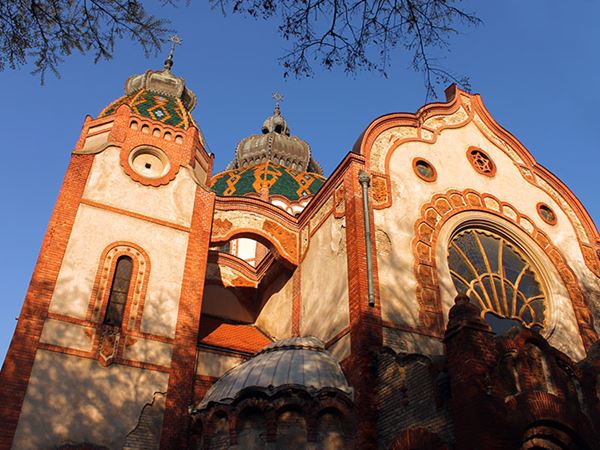
Subotica
Subotica, in the north of the country in its Baroque attire resembles any central European city. Subotica developed into a modern Central European city at the end of XIX and the beginning of the XX century. Today, on the Day of Subotica they give out awards such as ''Honorary Citizen of Subotica''. Their municipality is a multi-ethnic environment with a population consisting of representatives of more than 20 different nationalities.
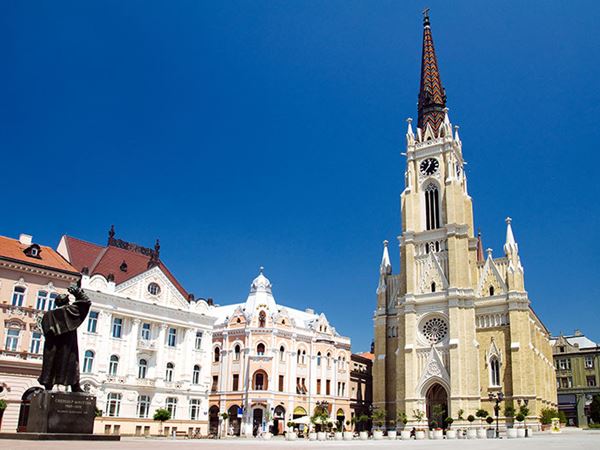
Novi Sad
Novi Sad is the capital of the Autonomus Province of Vojvodina and is the second largest city in Serbia. Positioned on the Danube and with the seventeenth century Fortress, at the crossroads of major roads in the vicinity of Fruska Gora with 17 large-scale monasteries, attractive old town, numerous museums, has all the necessary diversity for a modern tourist centre. It is a city which slowly and urbanely spreads a life rhythm and shows tolerance of multi-ethnic Vojvodina.
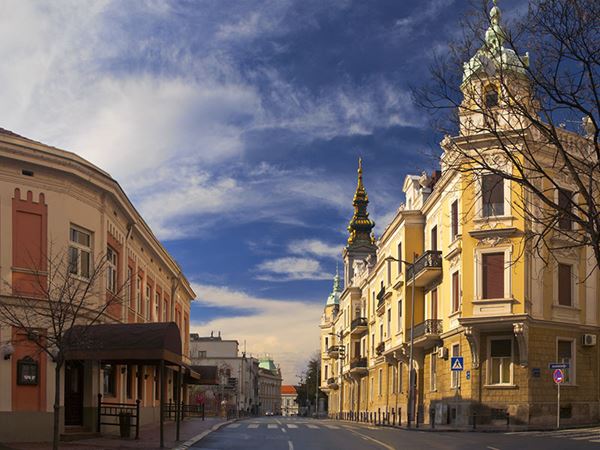
Belgrade
Belgrade, the capital of Serbia which never stays still in its mixture of Eastern passion for life and Western elegance. Some of the interesting facts related to Belgrade: first coffee house in Europe was opened in Belgrade, in Drocol in 1522 and served only black coffee. Belgrade Temple of Saint Sava is one of the largest Orthodox churches in the world. The temple was built exclusively from voluntary contributions, and although it is not fully completed is one of the most famous symbols of the city. Belgrade's ''Arena'' is one of the five largest hall sin Europe.
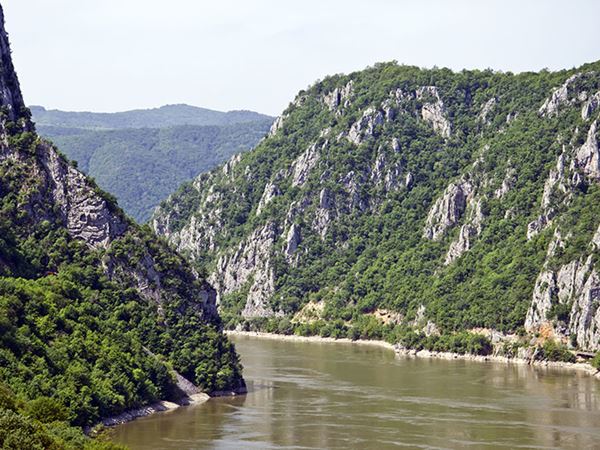
Djerdap National Park
Located on the Danube River on the border with Romania in eastern Serbia, the Djerdap National Park hides some of the most impressive natural beauties and archaeological sites. The highlight of the national park is the Djerdap Gorge, known as the Iron Gate, stretching nearly 100 kilometres along the slopes of the Carpathian Mountains.

Mokra Gora
In Western Serbia, between the mountains of Tara and Zlatibor, there is Mokra Gora, a magnificent landscape of valleys, river gorges, mountain peaks and passes. The famous Sargan Eight, the railway, and Woodtown, the ethnic village, make this area even more interesting. Ethno village Drvengrad is situated on the mountain Mećavnik and was built according to the idea of the famous film director Emil Kusturica. Authentic log cabins were used for the construction.
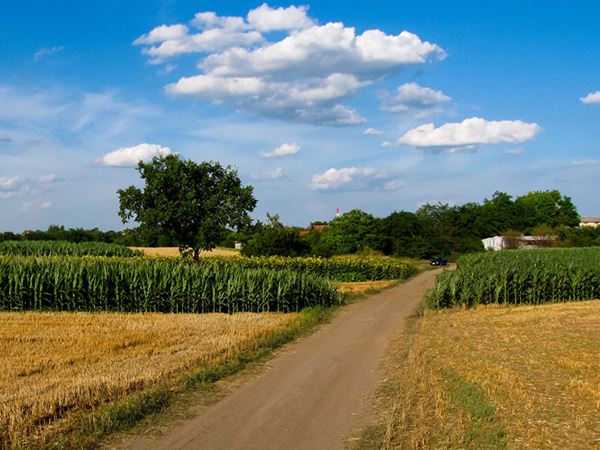
Kovacica naive art village
Kovacica naive art village - Naive Art from Kovacica (Slovaks village) is of great importance to the map of folk art and represents some kind of a naive metropolis. This small village, for more than forty years, amazes the world with its art, especially painting. That was the reason for establishing Gallery of Naive Art. The images displayed show the rural reality, but in a poetic spirit.
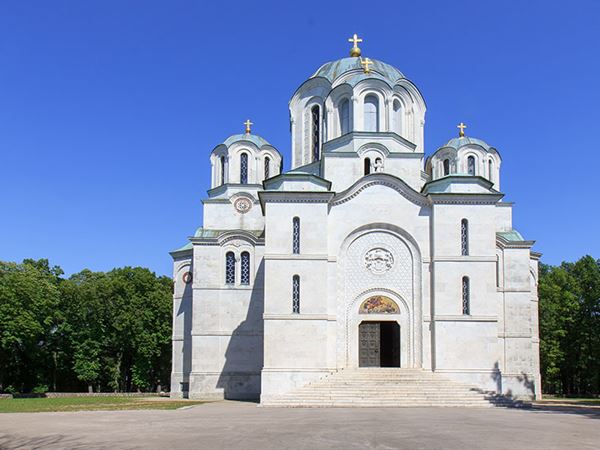
Oplenac Topola
Oplenac Topola is a town and municipality situated in the Šumadija region of Serbia. The local St. George Church is the burial place of the Ducal and Royal Family of Serbia and Yugoslavia (the Karađorđevićes). Topola is famous for its yearly Oplenac vintage festival, (in Kings Wineyards) attended by several thousand visitors each year.















